Allihies village and Dursey Sound on the Beara Peninsula
Our 48 hours in the free Castletownbere motorhome parking was up, so we continued on the road clockwise around the Beara peninsula. Putting the village of Allihies on the north coast into our satnav, she tried to take us across the middle rather than round, but we’d heard reports of vans needing to be towed out by tractors on narrow lanes up there, so turned left and ignored her until she saw the error of her ways.
Reaching the bottom end of the road looping around the peninsula, we detoured and turned onto the road which took us down to the very tip and the hopping off point for Dursey Island. The island was a slave depot in Viking times, where they would keep their Irish slaves until they had enough for a boatful to ship back to Scandinavia. These days it’s a wildlife sanctuary and mainly visited by walkers. The usual method of getting to the island is to take Ireland’s only cable car across the sea, however it has been out of action for a while for maintenance.
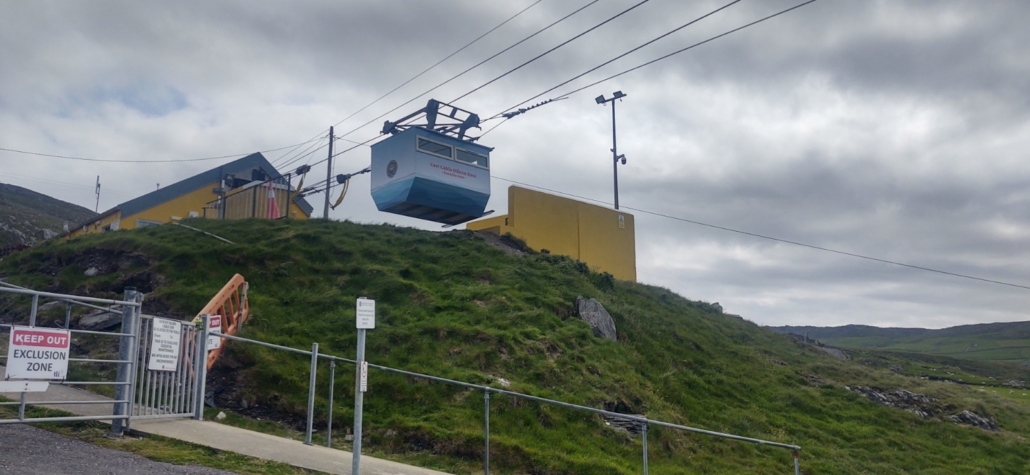
We assume that folks needing to visit the island are getting boats over there. Until 2012 both locals and livestock took priority on the cable car, however livestock are no longer allowed to use the cable car, so there’s an animal pen at the top of the ramp down to the tiny harbour. We arrived on a Sunday morning and there was no sign of anything happening other than a few locals fishing off the rocks in the shadow of the cable car pylon.
Jay saw his opportunity and grabbed it. Out came the sea fishing gear bought for our trip to Norway. Sadly this experience wasn’t as successful as when he fished the Saltstraumen in Norway where he ended up with a bucket full of fish which kept our freezer stocked for a good while. The Irish fish were clearly a tad more savvy, and in the end his lure got caught on a rock and went missing.
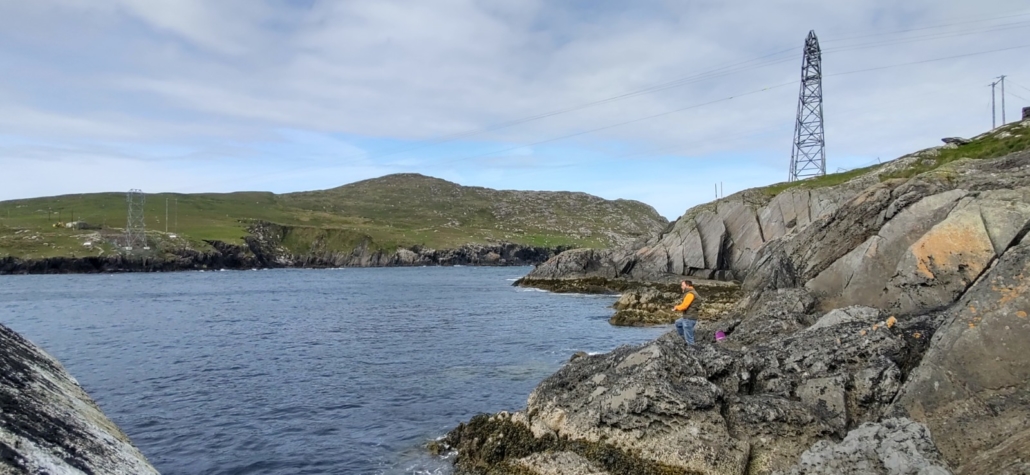
We headed back up towards the peninsula loop road, but by now there were quite a few other folks on the road. The single track road becoming a knot of motorhomes as Jay skillfully reversing for quite a distance to a passing place. Less than five kilometres after we rejoined the loop road, we crested a hill to see the white sand beach and the white box shapes next to it of Allihies campsite.
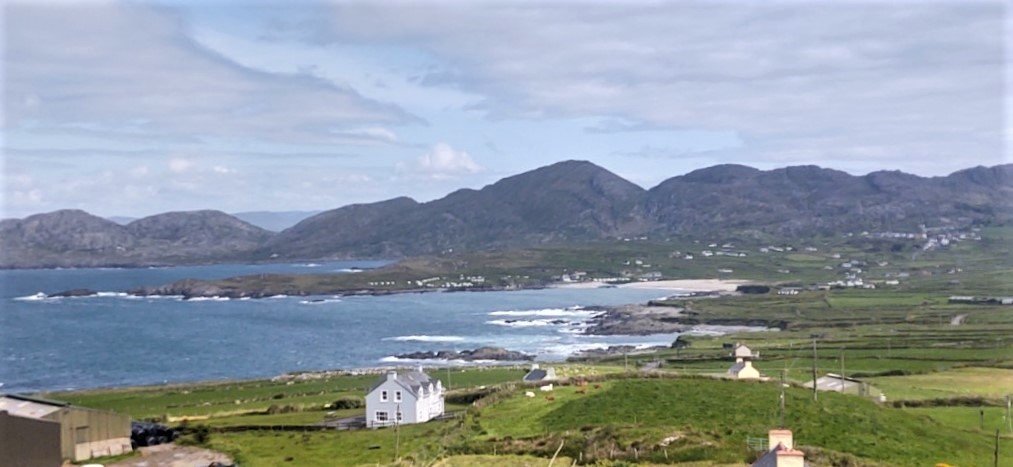
We’d originally planned to stay at the Eyeries motorhome stop, being lured in by electric hook-up to recharge our batteries and Jackery power pack. As the road went right past the Allihies campsite, which had good reviews, we thought we’d nip in and have a look. Most of the site is taken up by seasonal touring caravans, but we spotted an empty pitch overlooking the sea and pulled in (N51.633392, W10.062874). It’s a very relaxed type of campsite, there’s no reception, in fact I don’t think there’s even a sign to say it’s a campsite. From reading reviews on Park4Night, where it is called Anthony’s campsite, we knew the owner would pop round at some point to collect the money, so we settled in.
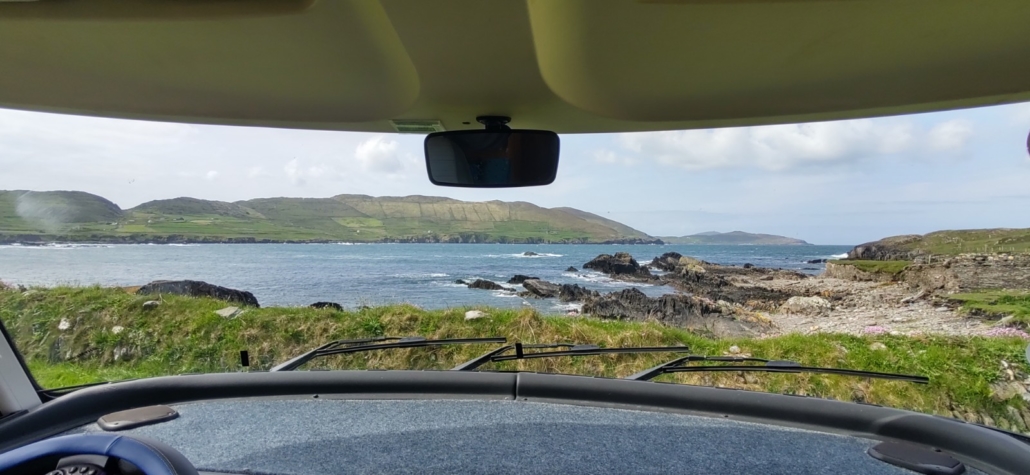
With a view like this out of our windscreen (even if it was on a slope too steep for our ramps so it’s a bit of an uphill climb to the kitchen and loo) we decided to stay for a couple of days. The Beara coastal walk runs across the front of the campsite, so we both set off for a run – Jay heading off to do some distance and me to do some sightseeing. The route is really well marked with yellow signposts and plenty of ladders to climb over walls and fences.
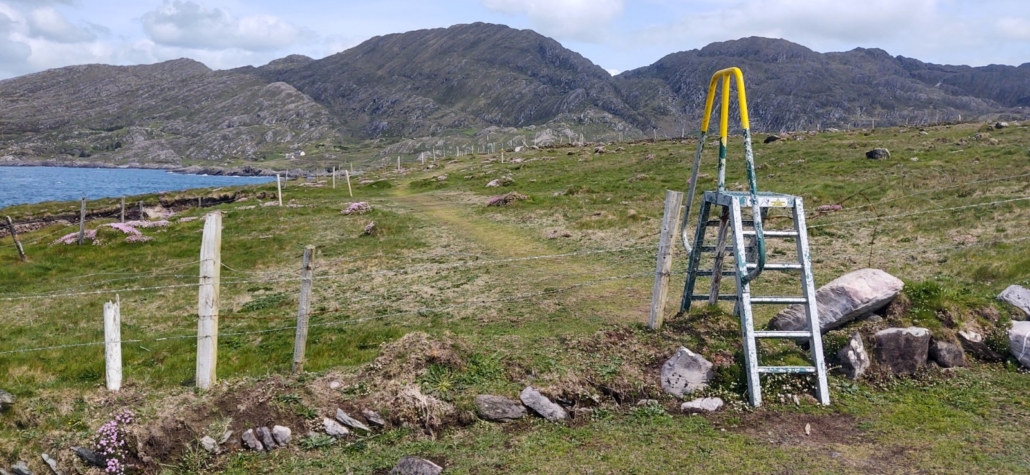
We’ve both been surprised by the lack of footpaths here in Ireland, as in England they seem to be everywhere. It turns out that most land is privately owned and there just aren’t the historical rights of way like the public footpaths at home. The Beara coastal walk has been created with the landowners’ permission which is great. However, there are signs saying no dogs are allowed on it which is a shame as it would be a great pooch walk.
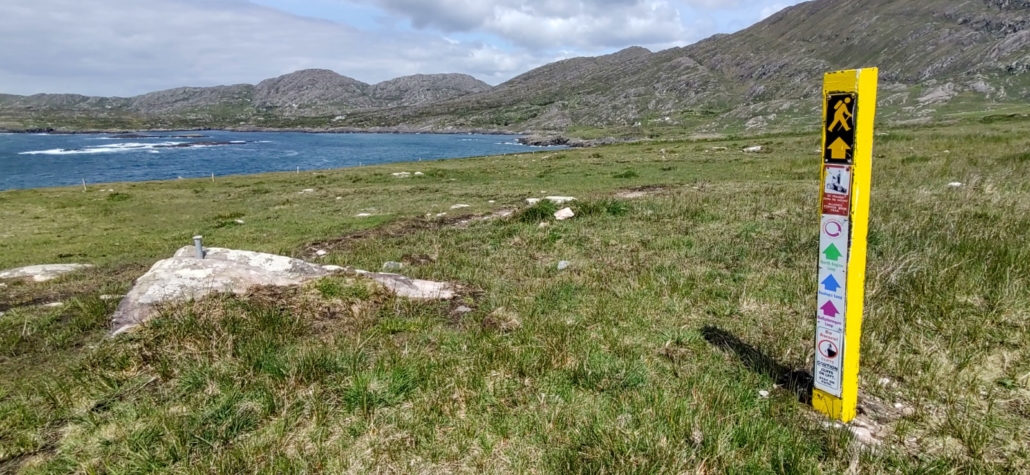
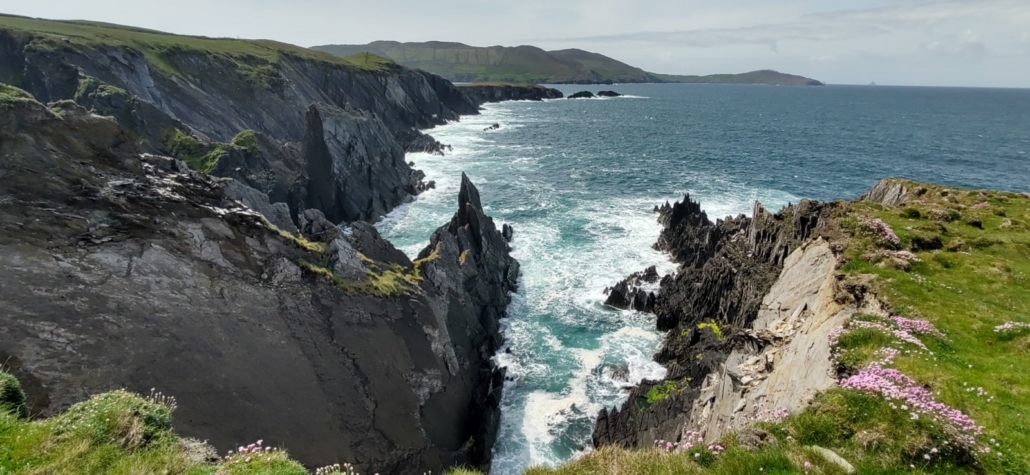
After following the coastal walk, I took the road back up into the town. It’s not great running on the roads as there are no pavements, but the drivers are all fantastic, slowing right down and giving me lots of space. Once in the town I followed the signs for the Allihies Copper Mine Trail, and just as I was about to reach the ruined engine house overlooking the town, Jay came running around the corner from the other direction. We jogged up the last few metres together and took in the view overlooking the town, beach and beautiful coastline.
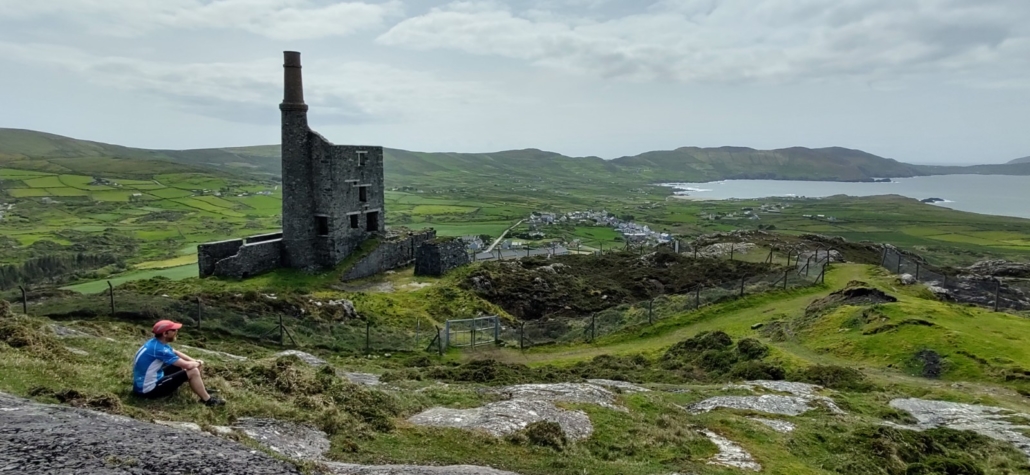
Copper ore deposits were found here back in 1810 and the Puxley family who owned the land (and built the mansion we saw on our walk yesterday) made a lot of money from mining the area. The work was dangerous and the wages low, but at one time there were 1300 people employed here. Experienced Cornish miners were brough in to help and in the 1930s 30,000 tonnes of pure copper was exported annualy. There’s a copper mining museum in the village but I was enjoying exploring the area in my own way.
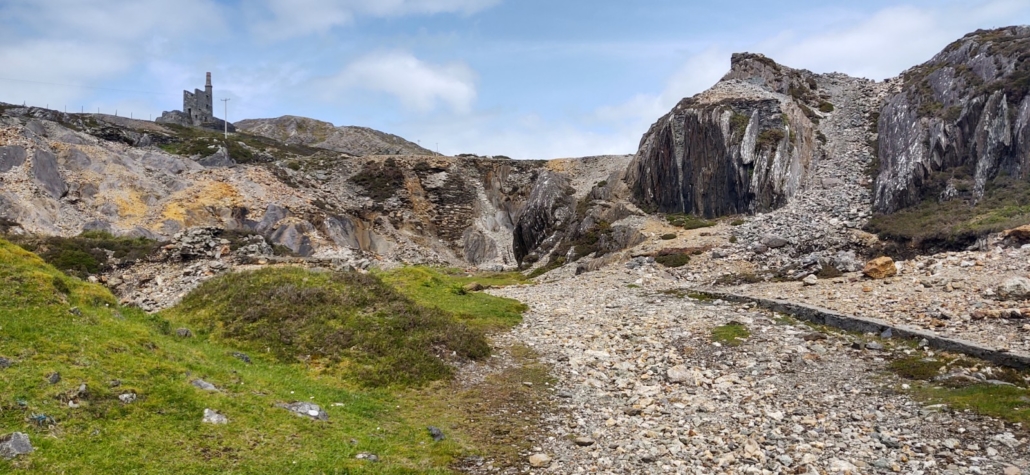
The last of the mines closed in 1962, but the ruined engine houses dotted around the landscape make for reminders of the area’s past. Even the beach in front of our campsite was manmade from the crushed quartz washed out from the mine workings.
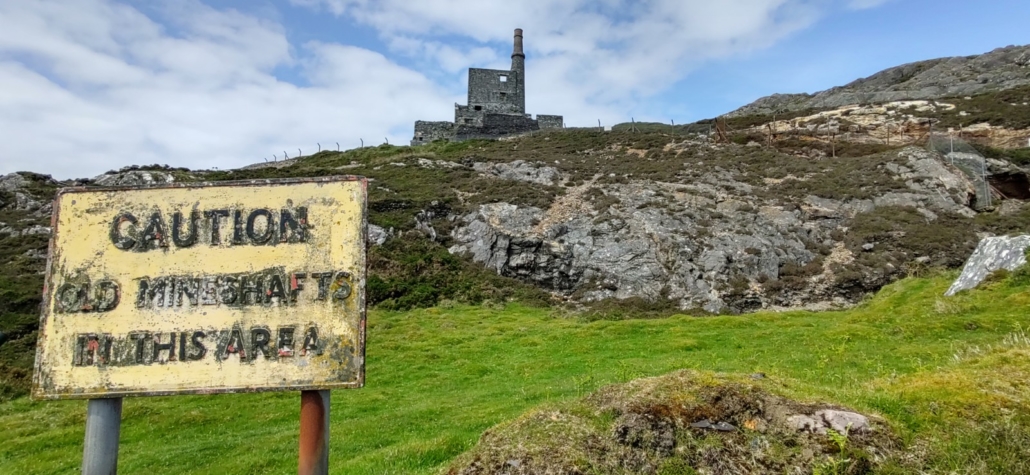
Heading into village the grey of the engine house ruins was in stark contrast to the brightly coloured shops and houses lining the main road. I dread to think how big the masonary paint aisle must be at the local DIY store to carry so many colours.
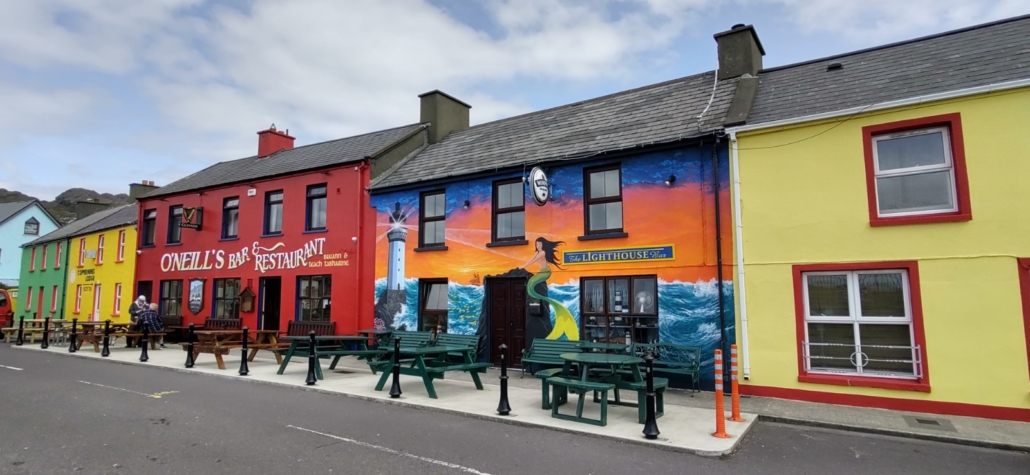
Back at the campsite the owner arrived and was paid him €7.50 each per night. €30 for two nights with a view like that is a real bargain, but the biggest excitement is that the campsite has bins – rubbish bins and recycling bins. Finally we can get rid of the bits of recyclable stuff we’ve been carrying around as you can only recycle glass, tins and drinks cans in the public recycling areas – so our plastic and carboard stash was growing.
We’d been on the Wild Atlantic Way for a week now and have managed to keep our rubbish bag small by folding up any clean bits of rubbish and popping them into our pockets – I’ve taken to calling it pocket litter. The bins on the street say they are for litter only and not household waste, but without a household bin to put our stuff in naughtily putting our pocket litter into these this seems to be the only way to keep on top of it. I did spot a sign for a waste and recycling centre in Castletownbere, but it was only open three days a week.
As the sun set we walked over the headland next to the campsite and caught our first view of Skellig island. The jagged rock islands made famous by Star Wars as Luke Skywalkers island home in the latest movies. As we move onto the Ring of Kerry our view of them should get better, but we won’t be getting the boat out to land on them – it costs around €140 each and is booked up until September!
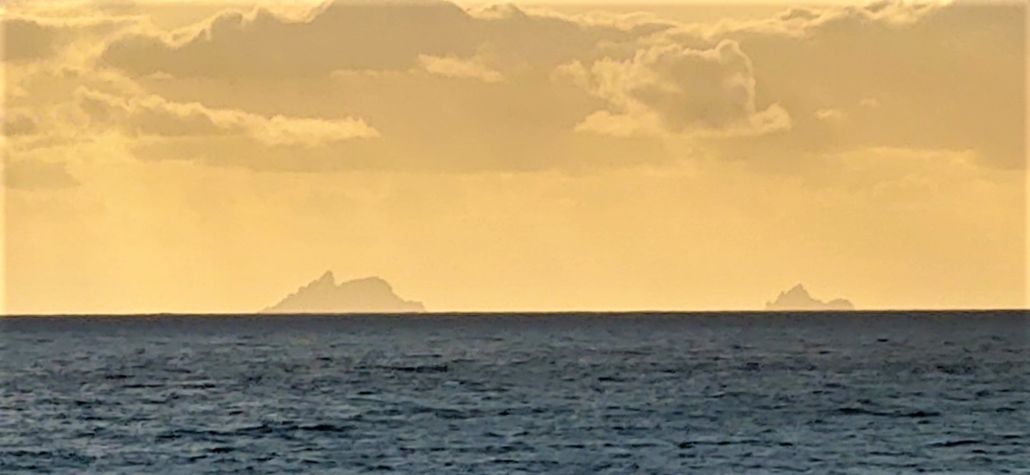
Knowing we didn’t have to move on the following day, we stayed up late (for us) to look at the stars. There’s hardly any light pollution here and the night sky was glittering with them. So it was a slow start to this morning, but with the sun out and the sea calm it was a perfect opportunity for Jay to have a snorkel.
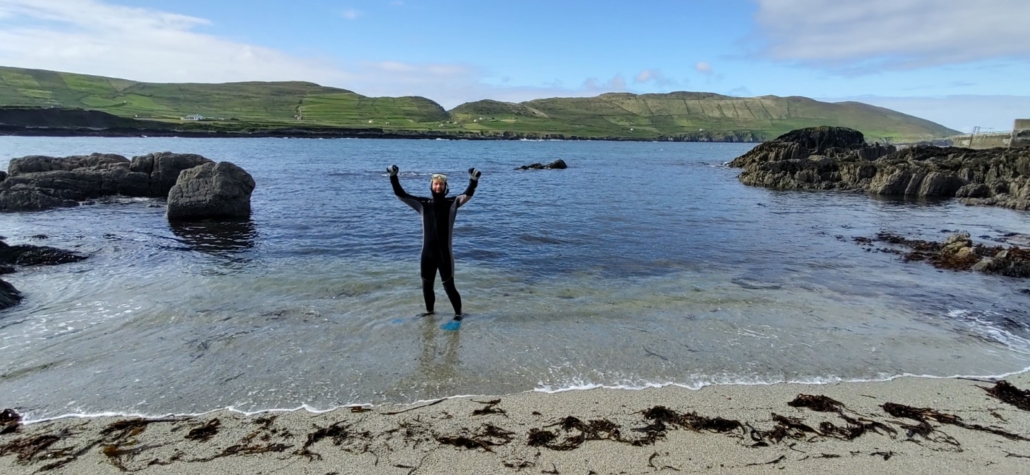
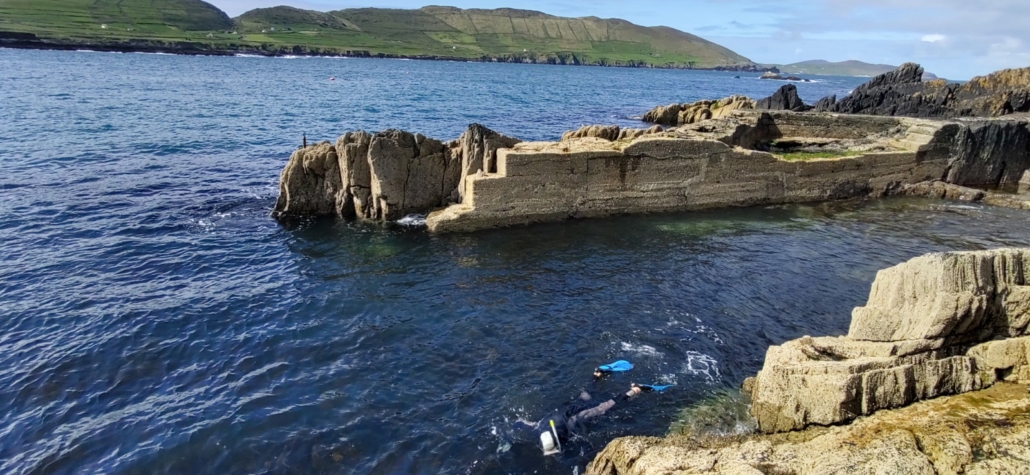
He reported back that it was mainly seaweed and kelp – he thinks all the fish might have been hiding in the kelp. Another wander into town followed, and then time to relax and look at what we plan to do in the time we have left in Ireland. We’ve just over another couple of weeks, but are enjoying things much more now that we have slowed down the pace and aren’t trying to drive every inch of the Wild Atlantic Way. The way things stand, we might now make it past Dingle before we have to head for the ferry, but that will leave us plenty to explore on future trips here.
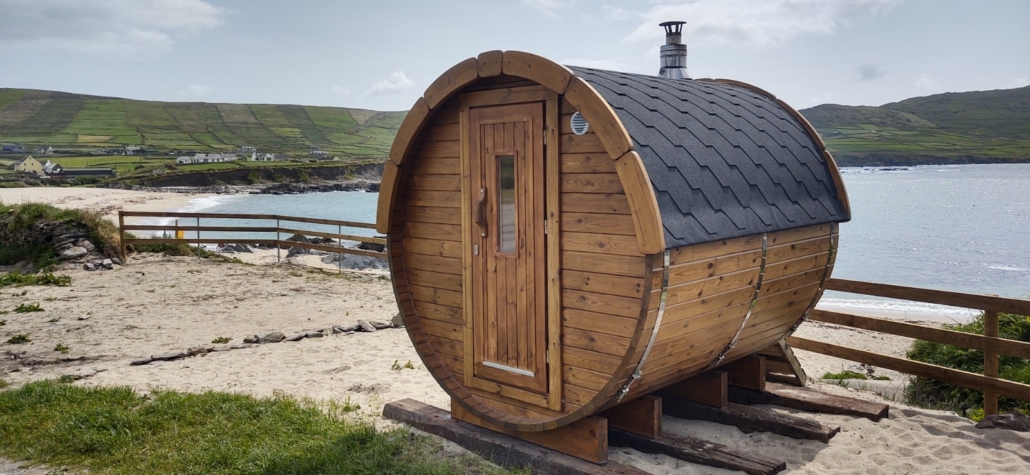
Ju x

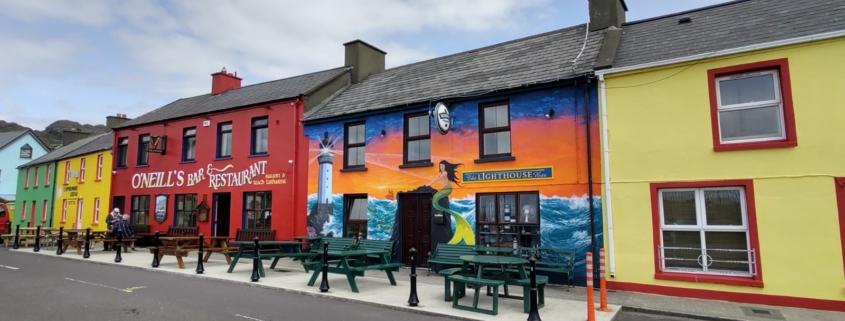
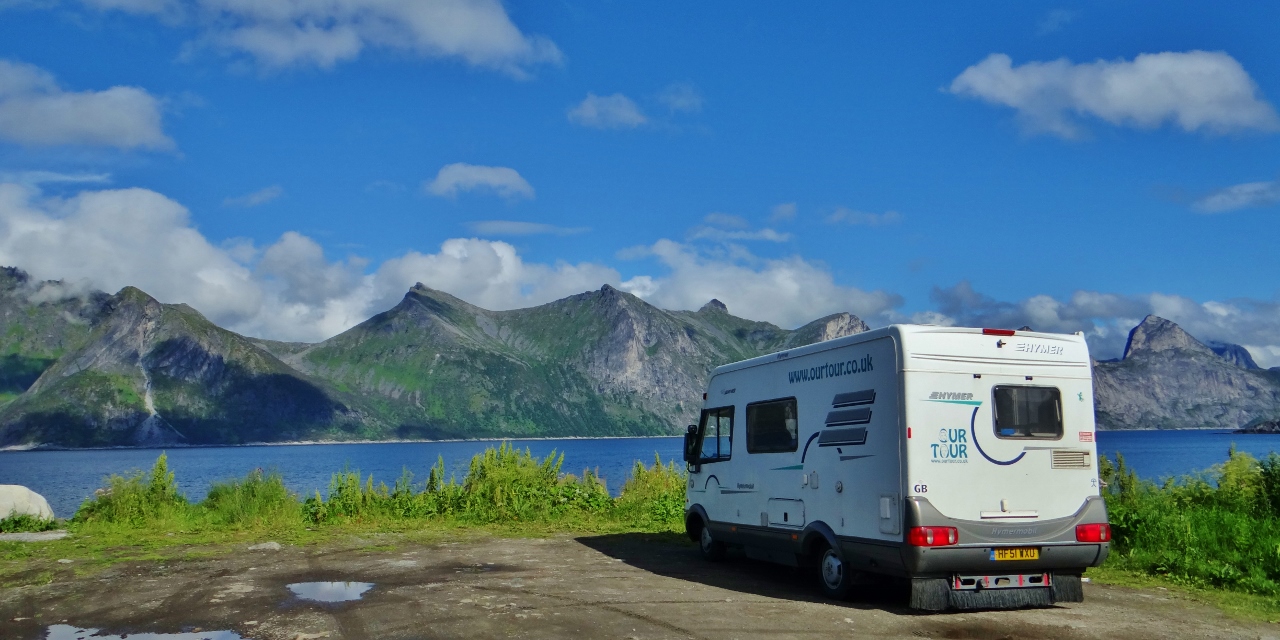
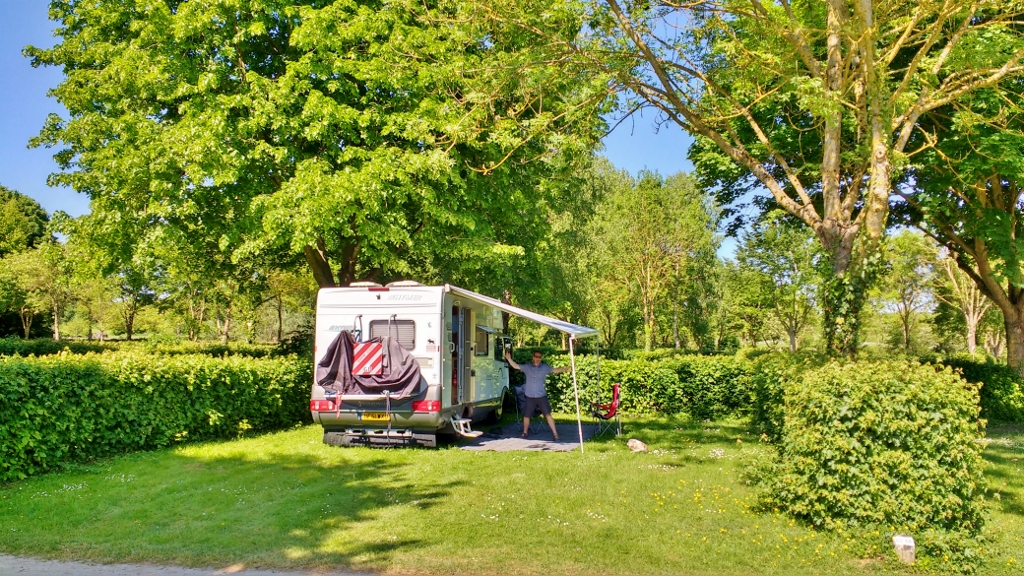

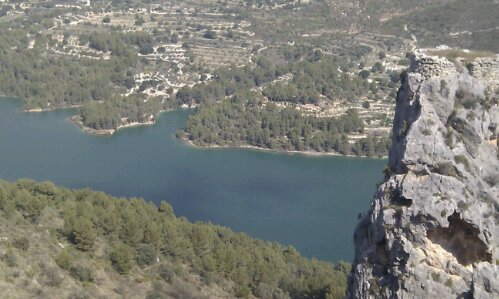
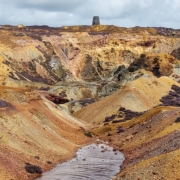



Leave a Reply
Want to join the discussion?Feel free to contribute!